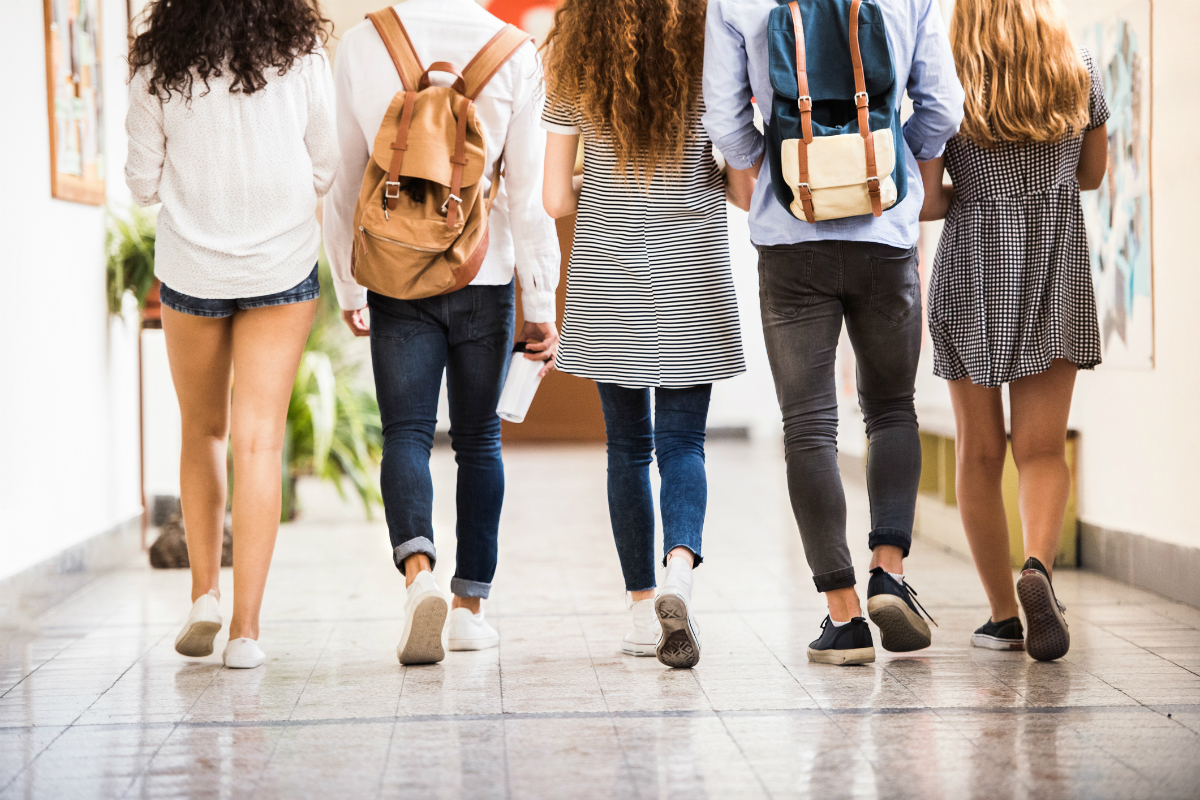As the new academic year begins, EdSource held a roundtable on Aug. 18 on how teachers and administrators can best handle students’ behavioral issues after experiencing isolation and other disruptions brought on by the pandemic.
Panelists recalled behaviors they observed during 2021–22 and how they’re using that knowledge to prepare for 2022–23.
Sarah Kirby-Gonzalez, a fifth-grade teacher in Folsom Cordova Unified School District and school board member at Washington USD, said it was evident when students returned to campuses that they hadn’t been around peers in a while. In her classroom, Kirby-Gonzalez covered the basics — from playground etiquette like the rules of kickball to how to pass around papers and work together.
Even teachers with “lots of tools under their belt” were struggling to meet students’ needs (as well as their own personal needs) and, as a trustee, she “saw an uptick in violent behaviors that we had not seen for quite a long time, if ever.”
Automotive technology teacher Mike Patterson of Lake Tahoe USD said that dealing with mask mandates was a whole other level of discipline and classroom management that teachers had to handle in 2021–22. Now, COVID-19 safety protocols have become more relaxed across the state and nation and there will likely be fewer teacher absences due to reasons like having to quarantine after exposure. Patterson also had the sense that local educational agencies had more teacher and counselor positions filled than they did the prior year. Not having as many substitute teachers or teachers/staff filling in for other classes may bring more consistency to students’ days.
“I think students do better when there’s consistency and last year was not consistent … The more we can get back to normal and the more consistency our students see the better I think they’re going to do,” Patterson said.
Los Angeles USD high school English teacher Gina N. Gray remarked that school was passive during distance learning and that a sense of community and collaboration had to be established as students came back together. They had to remember how to share space and express themselves.
With students around the country often being approached with a “deficit mindset” and terms like learning loss being thrown around, young people “take on this pressure and so of course we start seeing these kinds of behaviors,” Gray added. Gray tries to avoid that kind of language.
Setting expectations and building connections
For teachers, knowing students is invaluable in meeting their needs.
In Gray’s high school classroom, a syllabus isn’t handed out on the first day. Students have a say in setting classroom procedures and routines to meet the wants needs of their specific group.
Past students have asked for things like a few minutes of mindfulness time in the morning, which Gray obliged — providing coloring activities. Listening to students makes them feel validated and helps them to stay on task since they set the goals, Gray said. Procedures and policies are posted in the room.
“They feel connected to it because their voice is in it and their input is in it. It’s not my rules or my classroom, it’s our learning community,” Gray noted. “They feel empowered with all their actions so there’s no need to have behavior or outbursts because I have procedures in place that show them how to be responsible, how to manage those feelings and I model the language too.”
Patterson’s automotive technology coursework falls under career technical education and class rules.
mirror those that are helpful in the job market, including being in class on time, coming ready to work and learn, and being respectful of other people and their property. They talk about what each rules means. Having simple, clear expectations is helpful, Patterson said.
Wellness centers and supports
Erick Rouanzoin, a middle school principal at Fruitvale School District, said that even before COVID, his school had started an advisory class to begin the day in a space where news relevant to students can be shared and social-emotional learning can take place, among other things. Students have the same teacher for the class in grades 7 and 8. These teachers can be an advocate for their students in the larger school system as needed. Group counseling is also happening.
Rachel Andrews, a Redondo Beach USD counselor, operates a wellness center at a local high school where a counselor or therapist is always present to guide students.
“It’s made such a huge difference,” Andrews said. “Having that designated space has been really helpful for students because, instead of leaving and getting upset or having altercations in class or confrontations with their teachers, … they’re coming to the wellness center and decompressing, deep breathing.” In addiotn, there is also always a counselor or therapist present to guide students.
Washington USD has also found great value in the wellness center stationed on one of its high school campuses and the district is looking at ways to emulate the service at the elementary level, Kirby-Gonzalez said.
As for how policymakers can support LEAs, Kirby-Gonzalez said they should be asking what needs districts have and listen to teachers and school site staff. Data can guide districts in identifying their successes and needs.
Overall, teachers want to be part of the solution alongside administrators.
“I think for me it’s being respected as the educator and having my voice in the solutions,” Los Angeles USD’s Gray said. “The support that’s needed is that mutual respect.”





